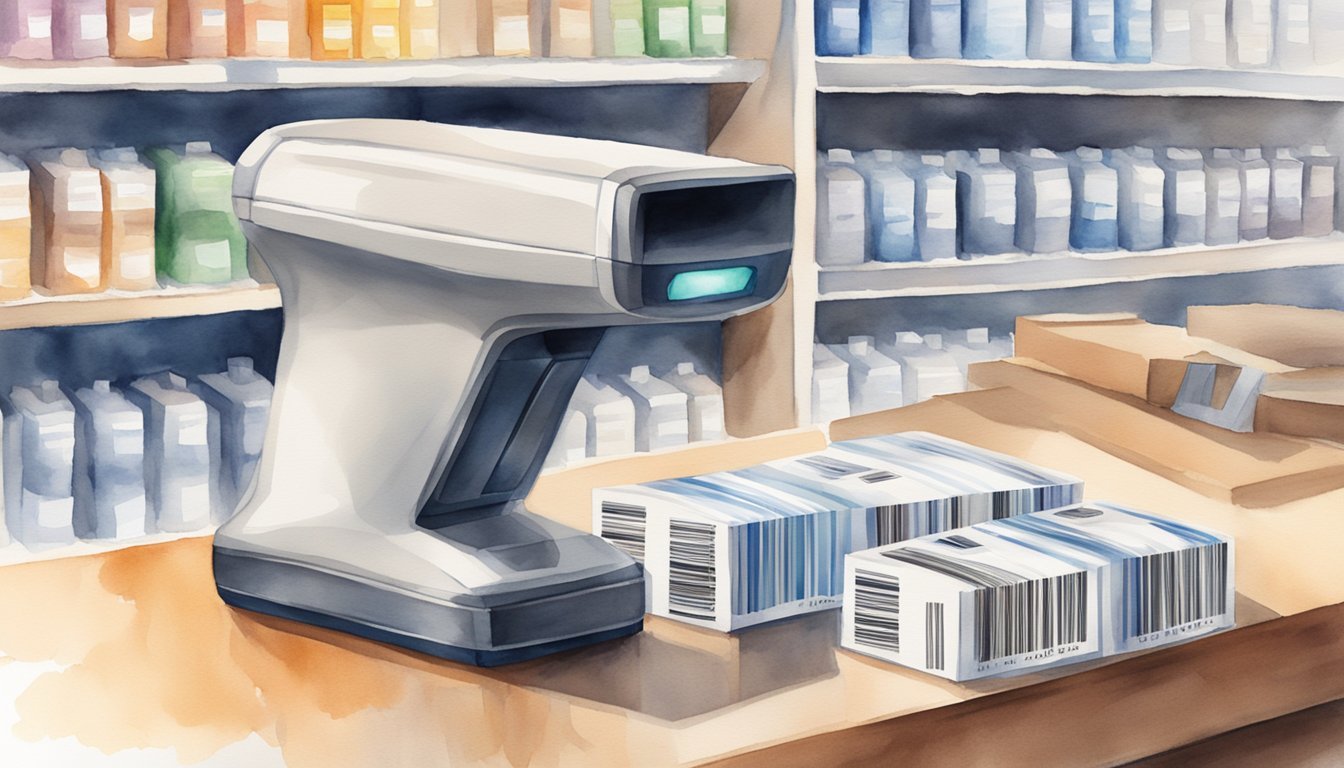The Evolution of Barcodes
The journey of barcodes from a simple idea on a beach to a technology that revolutionized the way we track and sell products illuminates the remarkable progression of data encoding systems.
Origins and History
The inception of the barcode can be traced back to inventor Norman Joseph Woodland, who was inspired by Morse code to create an encoding system for products. Woodland drew the first bar code in sand on Miami Beach, illustrating the potential for a new, visual method of identifying products. However, it wasn’t until the 1970s that the barcode emerged in the marketplace. The earliest systems, such as the Universal Product Code (UPC), relied on simple patterns of lines and spaces to encode information.
Key Developments in Barcode Technologies
Throughout the 1970s and 1980s, there was rapid development in barcode technology. The introduction of barcode readers and the standardization of the UPC led to wider adoption. They enabled unique product identification, which reduced human error in the checkout process and improved inventory management. Over time, barcode technology evolved, giving rise to numerous variants like Code 39, Code 93, and Interleaved 2 of 5, each serving different industry needs.
1D vs. 2D Barcodes
Initially, barcodes were one-dimensional (1D), consisting of vertical lines that represented data. They included formats such as UPC-A, UPC-E, and EAN-13. The late 20th and early 21st centuries saw the advent of two-dimensional (2D) barcodes like QR codes, which allow for more data storage and are easily scanned using smartphones. These 2D codes include PDF417, Data Matrix, and MaxiCode, offering various advantages such as error correction and the ability to encode images, web links, and serial numbers.
The progression from a series of lines in the sand to a comprehensive system that includes intricate patterns like Aztec codes reveals the ingenuity and ongoing innovation in data capture technology. Barcodes have become an integral part of modern commerce and logistics, testament to the pioneering work of figures like Woodland and the continuous pursuit of more efficient and reliable identification methods.
Implementing Barcode Systems

When organizations decide to implement barcode systems, they focus on streamlining operations such as inventory management, asset tracking, and data entry. The right combination of software and scanning technology can significantly enhance productivity and accuracy in tracking stock levels and managing the supply chain.
Barcode Scanning Technologies
Barcode scanning technologies are the linchpin in any barcode system. Traditional one-dimensional barcodes are made up of a series of varying-width lines and spaces that represent numbers or letters, allowing for quick scanning by barcode scanners. However, advancements have led to the development of two-dimensional barcodes, such as QR codes, which can hold more information and are readable in any direction. These can be scanned using an array of devices, including PC or Mac computers, iOS and Android mobile computers, and even dedicated barcode scanners designed for heavy-duty use in warehouse environments. Scanners can swiftly capture data points like SKU, serial numbers, and even weight, which contributes to more efficient shipping and receiving processes.
Inventory Management Solutions
Inventory management solutions utilizing barcoding offer small businesses and large warehouses alike the ability to track inventory with a high degree of accuracy. Barcode inventory systems, whether implemented via a comprehensive software package or through platforms like Sortly, link scanned barcode data directly to inventory control databases. This can support various inventory systems, including both perpetual and periodic inventory systems, facilitating realtime updates to stock levels and simplifying tasks such as ordering from vendors, cataloging new items, and selling products.
Barcode Software and Applications
Barcode software and applications are critical for creating the visual representation of barcodes that track products. These range from simple applications that might integrate with Excel for small businesses to complex software like Bartender and Finale Inventory that offer advanced features supporting a holistic workflow. They can generate labels of varying shapes and thickness, suited for different products and uses such as internal asset tracking or external shipping labels. Furthermore, barcode software can save time and reduce errors associated with manual data entry, aiding in areas such as healthcare and retail where inventory management processes are crucial. These applications provide dashboards and tools for data analysis, giving businesses a powerful way to manage global standard barcode types and to leverage barcode scanning for improved inventory tracking and productivity.

